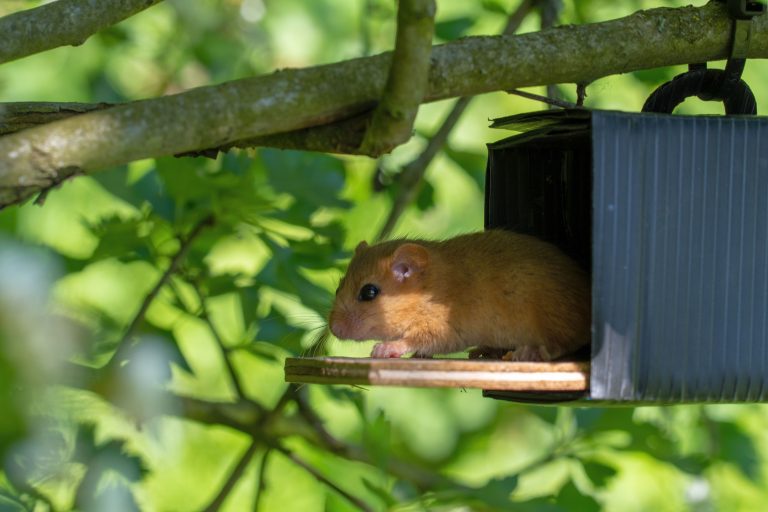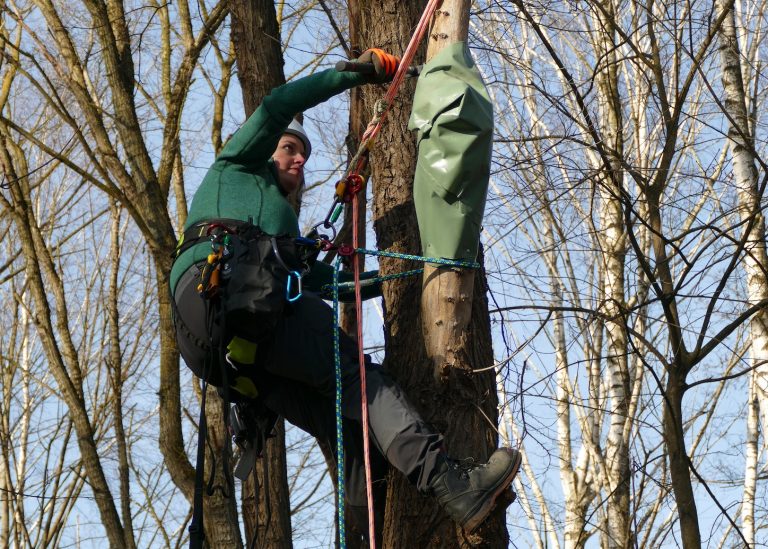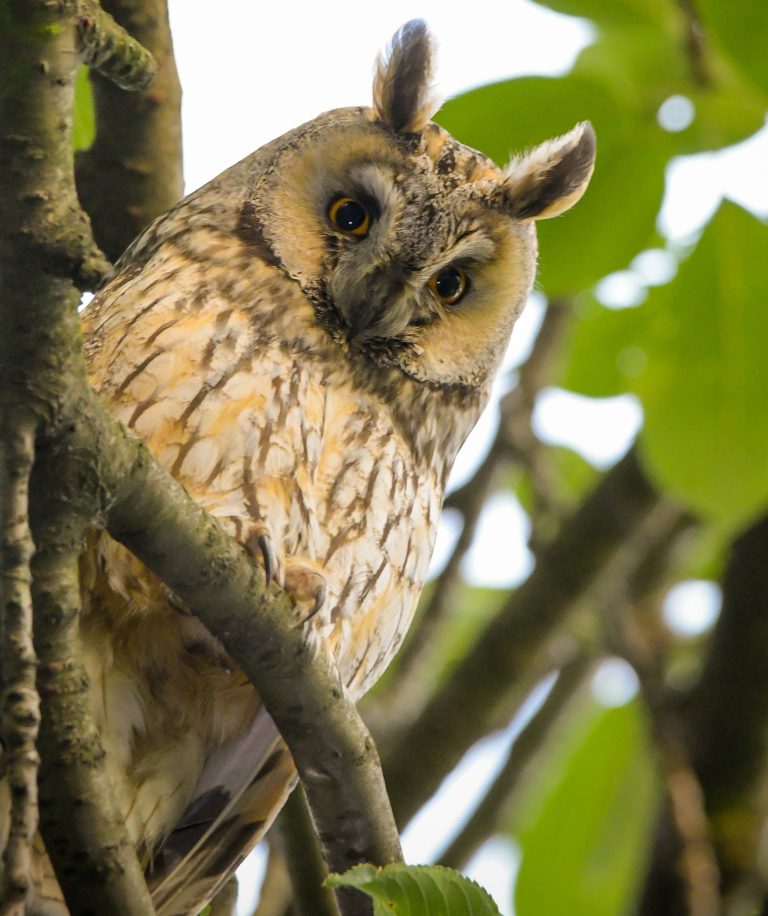Lauritz Gronowski is an environmental engineer at DB E&C specializing in wildlife conservation and mapping. For the past year and a half, he has been training a new colleague to help him in the field: Oti, who is two years old and about two feet tall and has a nose for this job. Here’s a story about a win-win situation.
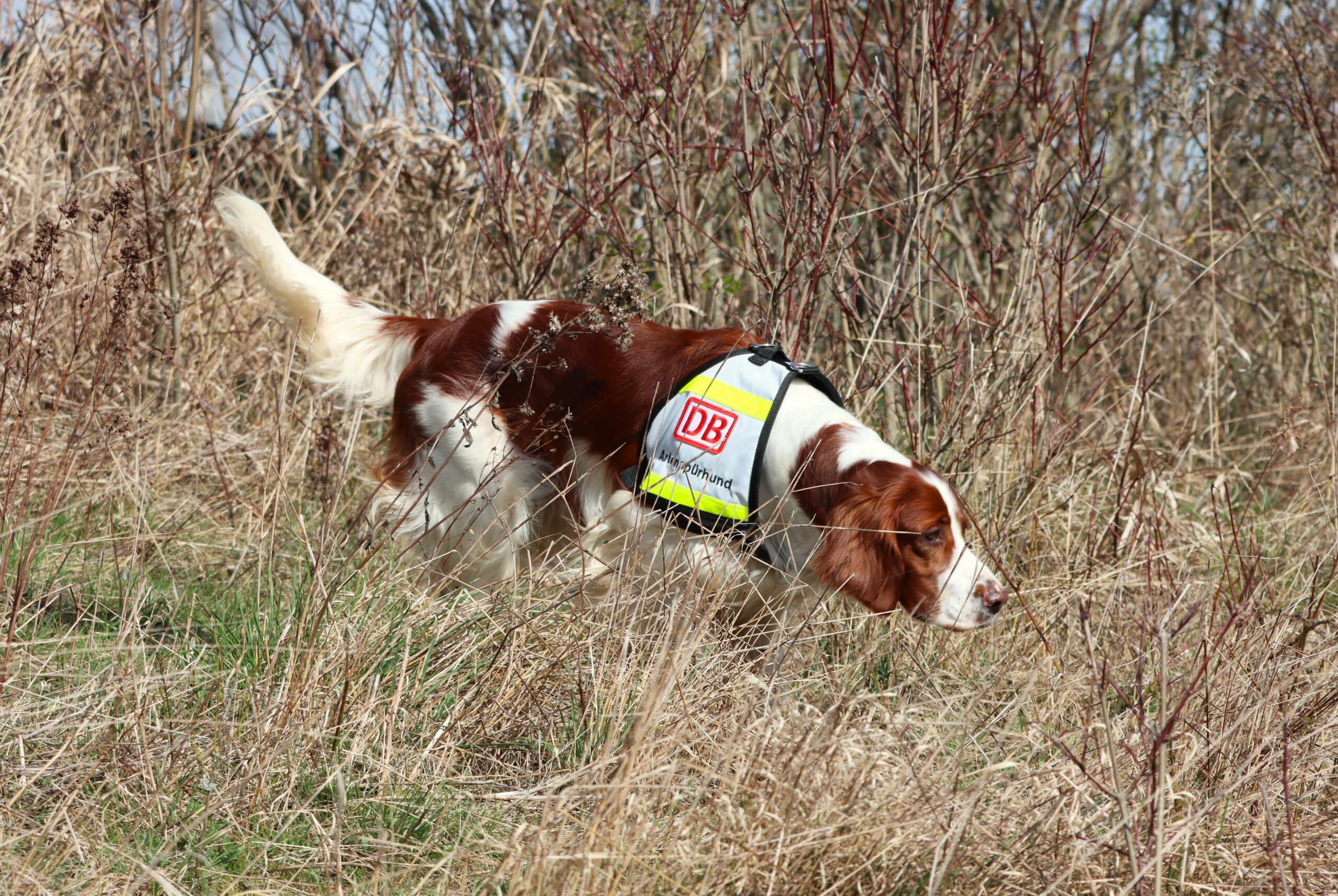
Contact
Sarah Geißler
Marketing & Communications
EUREF-Campus 14
10829 Berlin
Germany
Our news categories
If Deutsche Bahn needed a mascot, the sand lizard would be a front runner. The track-loving lizard plays a role in nearly every construction and maintenance project. It is one of the most common protected species that DB mappers look for when surveying areas where construction is planned.
One of DB’s mappers is Lauritz Gronowski. The environmental engineer has been working for DB E&C in the Environmental and Geoservices department for three years. Since March 2024, he has been responsible for species conservation at the Leipzig site. A field that is in his blood: “My father is a national park ranger,” says the Braunschweig native. “That’s why I have always felt drawn to nature and been interested in plants and animals.”
Gronowski’s specialty is mapping birds. It’s not an easy job. “Birds are mainly mapped by ear,” he explains. “That means you have to know the melodies and calls. Training actually lasts a lifetime, but I’m well on my way,” says the 34-year-old. He also maps reptiles, amphibians and other species in addition to birds. The fact that he’ll soon have active help from an unexpected source while tracking sand lizards is due to a happy coincidence. And the fact that we at DB E&C like to break new ground.
A win-win situation for people, animals and the company
Gronowski first heard about using dogs for mapping over a year and a half ago at a professional development course. “I had just gotten a puppy,” Gronowski remembers. That puppy was actually supposed to be trained as a hunting dog. But: “Being a mapper means you travel a lot. You often spend several days in the field and are always on the lookout for protected animals.” It would be unthinkable to take a hunting dog along. “Learning about conservation dogs opened up my eyes to new possibilities,” says Gronowski.
Things moved quickly from there. After reading up on the subject, Gronowski proposed the idea of training his dog Oti as a conservation dog. His boss agreed immediately. It’s no wonder, because there are obvious advantages to using conservation dogs during mapping. “It’s definitely more efficient with a dog than without,” says Gronowski, “and less dependent on the weather.” According to Gronowski, without a dog’s help, it usually takes five to seven passes on different days in ideal weather to map sand lizards. “A dog immediately identifies areas that are worth taking a closer look at,” says Gronowski. “If the dog doesn’t identify anything at all in a particular survey area, it saves you a lot of time. That means there is most likely nothing to be found there. Well-trained dogs have a much lower error rate than humans.”
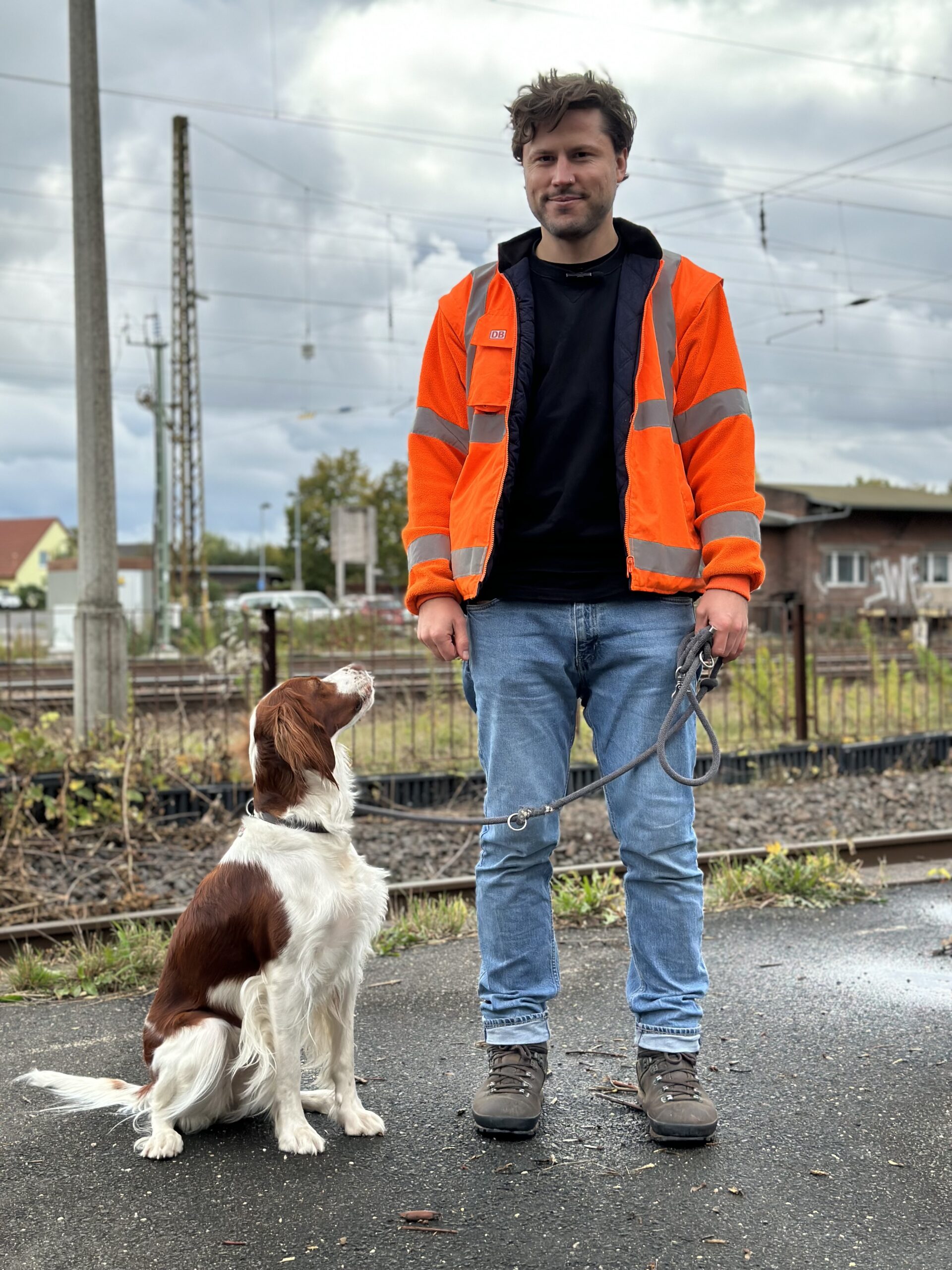
Once Gronowski and his boss worked out the formalities and found a trainer, Oti began training in November 2022. Gronowski took multiple seminars where he learned the basics and was given the necessary tools, but the actual work has had to be done at home. “The courses weren’t as important for Oti as they were for me, as the handler. Everyday training is what matters for her.” Fortunately, Oti is naturally well suited for the job. “As an Irish Red and White Setter, she was bred to work with her nose.”
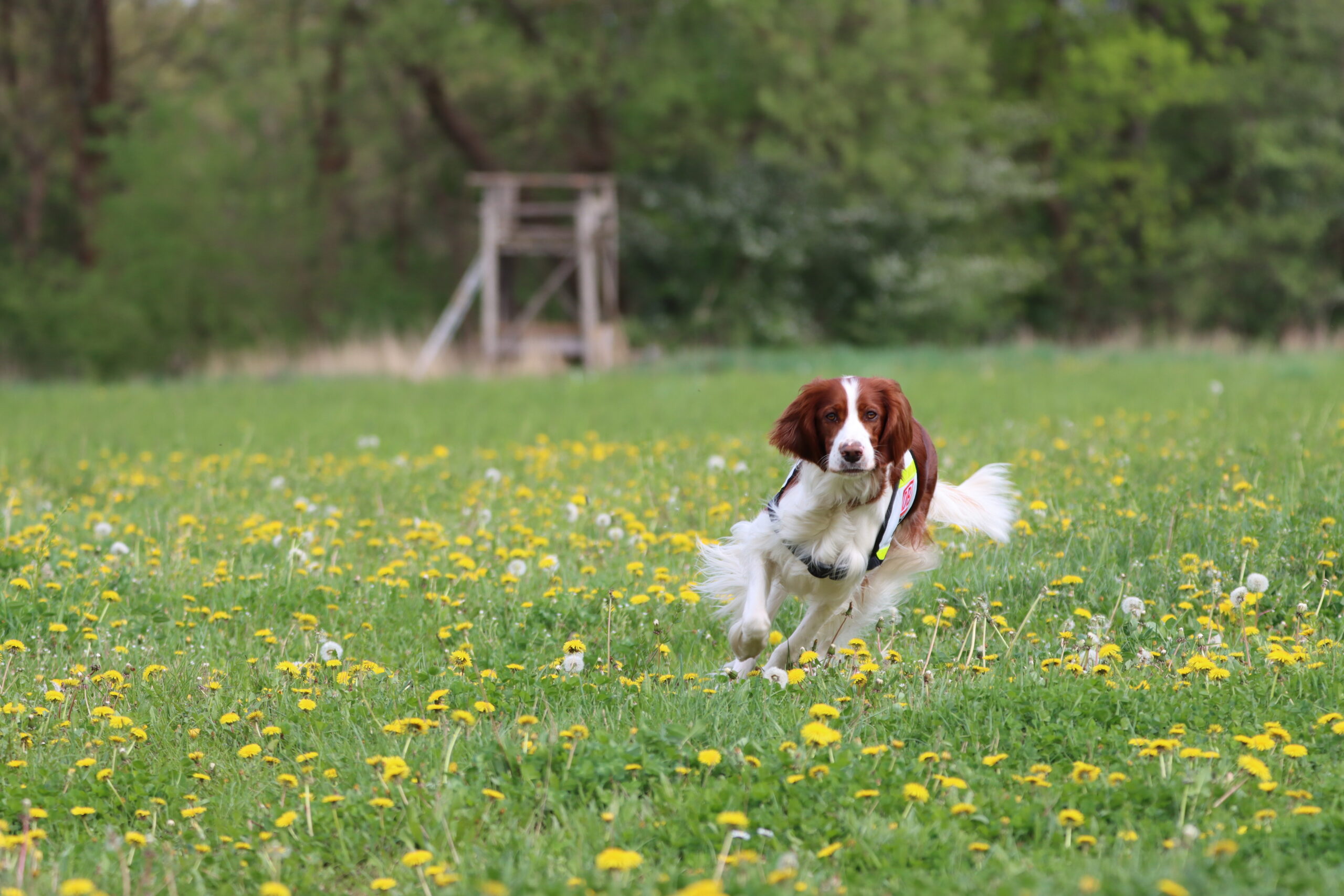
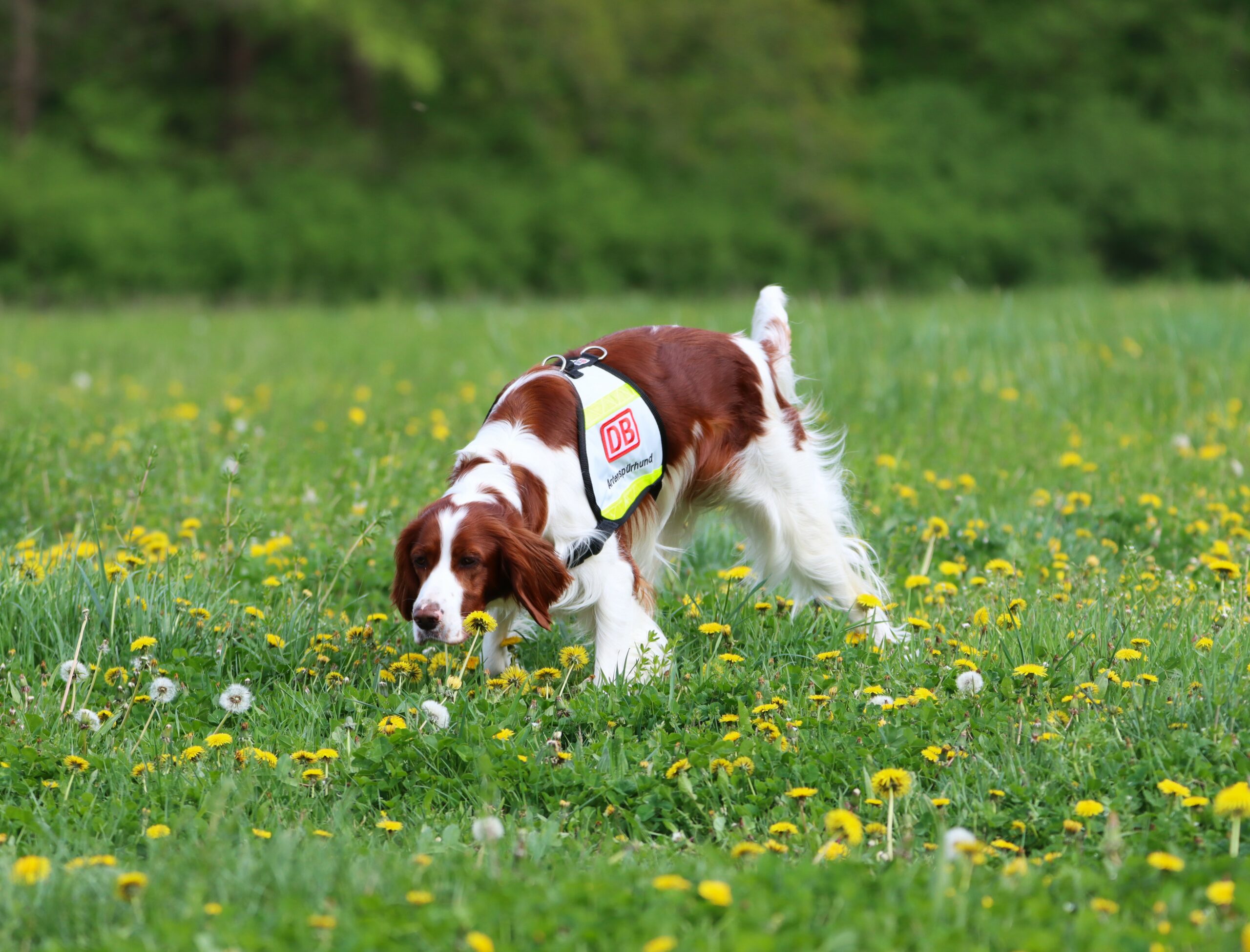
Putting Oti’s nose to the test
Before sniffing out a “real” target scent, however, Oti’s daily training schedule included practicing with a training scent. Specifically a toy with a strong plastic smell. “She loves it. She’s totally focused on it,” says Gronowski. “I used this focus to train Oti’s pointing behavior.” Once Oti had internalized the scent, it was time to take the search outdoors. Gronowski hid the toy. Oti then had to find it, sit in front of it and stare at it. Because, according to Gronowski, “The hardest part isn’t teaching the dog to find a scent; it’s teaching them to point at the location of the scent.
Pointing by sitting still and staring at the source sounds easier than it is. Dogs have to resist the strong urge to allow other smells or noises to break their concentration. It’s hard, especially for a young dog like Oti. What’s more, inexperienced dogs start to lose focus after just a few minutes of tracking. “Even a trained dog can only concentrate on the work for a maximum of ten, maybe 15 minutes. Any longer, and it gets worn out,” says Gronowski.
As soon as Oti had learned basic pointing behavior, Gronowski gradually reduced the strength of the scent. Gronowski cut the toy, which was initially the size of a fist, into smaller and smaller pieces, week after week, until only pinhead-sized toy remnants remained. “That’s how you train a dog’s sensitivity and search behavior so that it really searches very precisely without stopping,” says Gronowski. “That’s the stage we are in right now. Oti has mastered pointing behavior and can find the pinhead-sized training scents.”
Next stop: sand lizard
The next step was to train Oti to smell the actual target scent: the scent of the sand lizard. But before that, Gronowski had to obtain suitable scent samples, which proved a challenge. “Sand lizards regularly shed their skin. We had to find pieces of shed skin, which is very difficult out in the wild,” Gronowski says. Samples of target scents are in high demand in the conservation dog business. Gronowski’s team fortunately found a piece of skin and even a tail that had been shed. “We’re starting to train with these samples now. You do that by mixing the target scent with the training scent, and then you gradually remove the training scent over time.” It takes two weeks to three months to train for a new target scent depending on the scent and training intensity.
Oti and her owner are now in the home stretch. As soon as Oti’s nose has internalized its first target scent, the mapping work will begin. When will that be? “I’m hoping to be able to start working with Oti in the field this summer,” Gronowski says. “She should be ready by then.” That will mark the start of a new chapter for Lauritz Gronowski: His pet dog Oti will then also become his colleague.
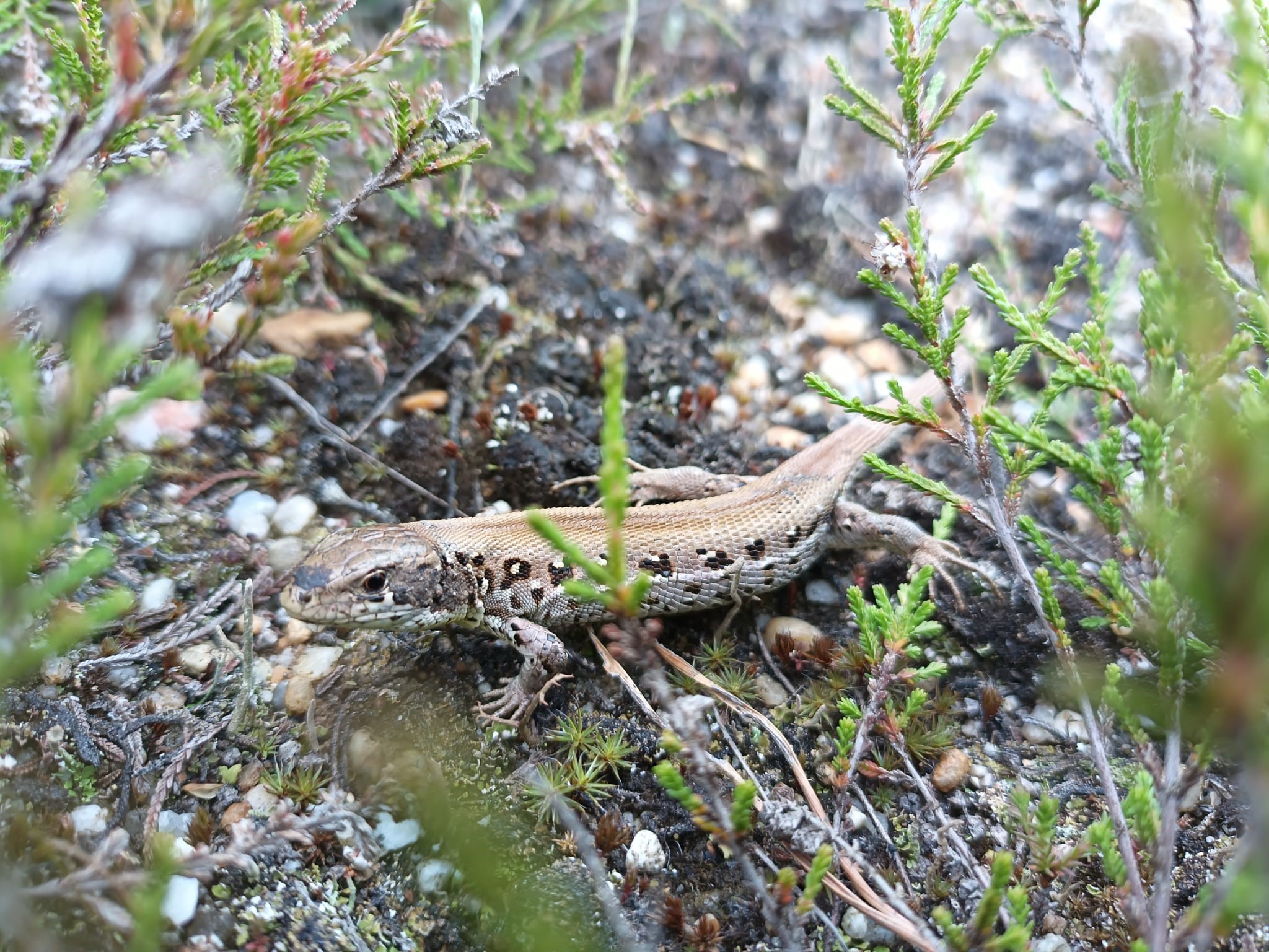 Oti’s first target scent: the sand lizard
Oti’s first target scent: the sand lizardOti’s first target scent: the sand lizard 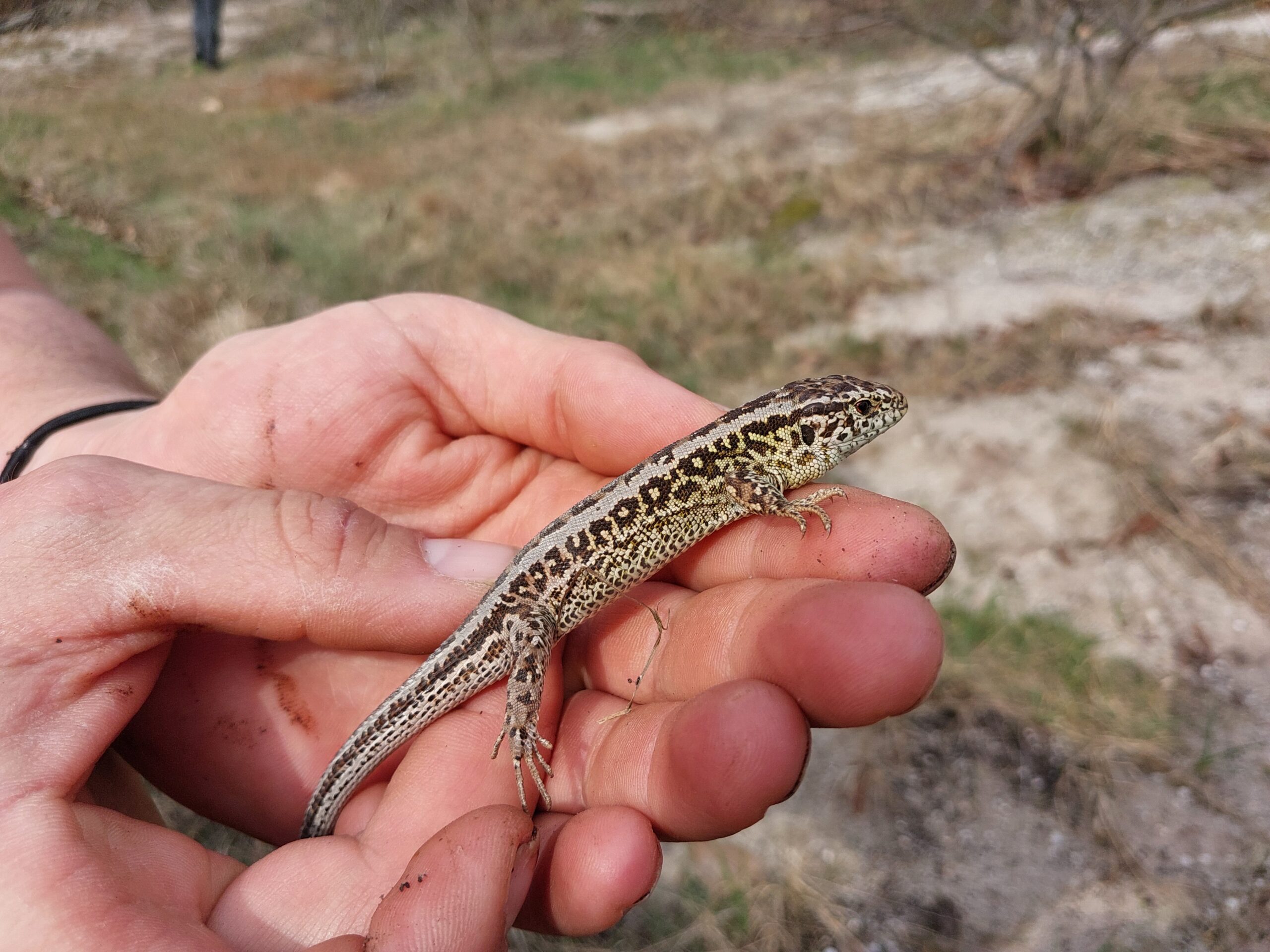 Oti’s first target scent: the sand lizard
Oti’s first target scent: the sand lizardOti’s first target scent: the sand lizard
